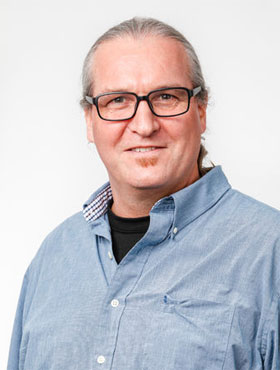Since the development of Cell Theory in the early nineteenth century, it has been appreciated that the cell is the fundamental unit of life. Considerable research effort has focused on understanding the ways that our cells are different from one another and on how they differentiate and grow from a fertilized egg (a single cell) to the thousands of cell types and trillions of cells that make up the body. But despite the central importance of the cell, technical limitations have long prevented researchers from investigating changes at the cellular level. Paul Robson, Ph.D., who recently joined The Jackson Laboratory for Genomic Medicine (JAX-GM) as its director of single cell genomics, is looking to change that. As he says, “if you want better insight into how biology works, you need to look at its fundamental unit.”

Robson must overcome formidable obstacles. First, it can be challenging to isolate and work with individual cells. Second, even if a single cell can be isolated, it only has a small amount of biological material inside, far too little for most research methodologies. Consequently, tissues are usually studied in bulk preparations containing a mixture of huge numbers of cells, masking important differences between the underlying cell types and preventing assessment of cell-to-cell variability. Fortunately, recent major advances in automation and microfluidics—the design and construction of systems for manipulating very small volumes of liquid—now allow researchers such as Robson to effectively analyze single cells in small, well-controlled reaction volumes.
The single-cell technology, methods and expertise Robson brings to JAX-GM have the potential to advance many of the ongoing research programs. A study published recently in Nature Immunology shows the capability he provides. While still at the Genome Institute of Singapore Robson, Siva V, Ph.D. (now also at JAX-GM as an associate research scientist) and colleagues investigated the process by which the precursors to specialized immune cells called dendritic cells (DCs), which are present in the bone marrow, develop into either conventional type 1 DCs (cDC1s) or conventional type 2 DCs (cDC2s), found in the peripheral tissues of the body. Prior to this work, it was suspected that these pre-DCs did not commit to the cDC1 or cDC2 fates until they reached the periphery. However, by performing single-cell analysis of which genes were being actively transcribed in the pre-DCs, Dr. Robson and his group were able to show that the choice to commit to either the cDC1 or cDC2 fate actually begins in the bone marrow. It would have been impossible to identify these cDC1- and cDC2-primed cells without advanced single-cell technology.
At JAX-GM, single-cell genome sequencing can be applied to tumor cells to track how genetic mutations propagate through the tumor and make different cells genetically different, or heterogeneous, within the same tumor. Single-cell transcriptomics, the study of what genes are expressed and how much they are expressed within the cell, provides the opportunity to uncover molecules that control cell-cell communication between the many cell types that reside within a tumor, identifying potential drug targets. More broadly, single-cell transcriptomics and epigenomics have the potential to identify new biomarkers for cell types that are otherwise difficult to identify, or are even unknown to exist. Finally, as with the DCs in the Nature Immunology study, by analyzing individual cells, it will be possible to reconstruct cell development at high resolution and reveal the precise time at which cells achieve their unique identity and function.
Many fields of biology will be impacted by single cell genomics, and JAX-GM will reap tremendous benefits by having in-house technology and expertise. Genomic medicine requires deep understanding of how the genome functions in various healthy and diseased tissues, and Robson provides the ability to decipher that function one cell at a time.